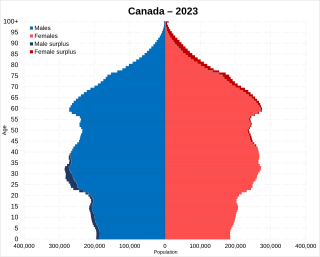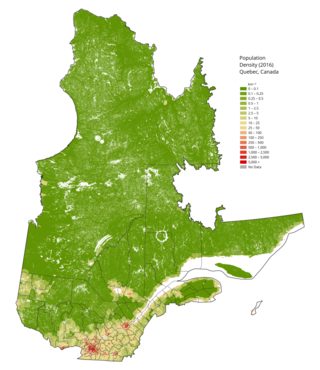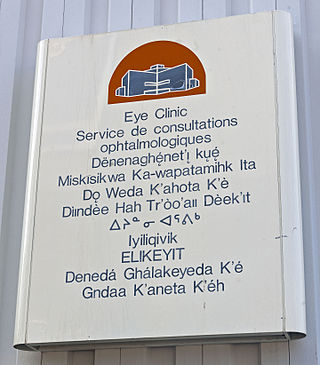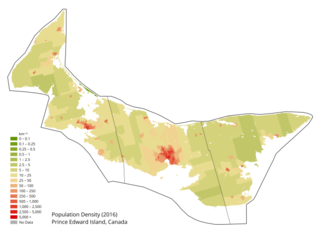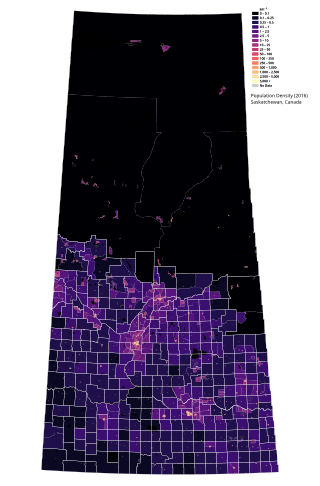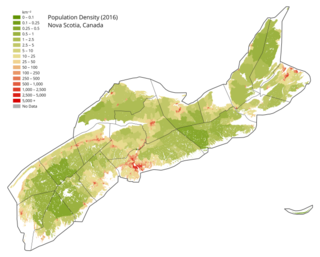This article has multiple issues. Please help improve it or discuss these issues on the talk page . (Learn how and when to remove these template messages)
|
| Language Endangerment Status | |
|---|---|
| Extinct (EX) | |
| |
| Endangered | |
| Safe | |
| |
Other categories | |
Related topics | |
 UNESCO Atlas of the World's Languages in Danger categories | |
An endangered language is a language that it is at risk of falling out of use, generally because it has few surviving speakers. If it loses all of its native speakers, it becomes an extinct language. UNESCO defines four levels of language endangerment between "safe" (not endangered) and "extinct": [1]
- Vulnerable
- Definitely endangered
- Severely endangered
- Critically endangered
| Language | Speakers | Status | Comments |
|---|---|---|---|
| Achumawi language [1] | 8 | Critically endangered | |
| Acoma-Laguna language [1] | 10,670 (2007) | Definitely endangered | Keresan languages |
| Ahtna language [1] | 80 | Critically endangered | |
| Alabama language [1] | 370 | Definitely endangered | |
| Aleut language (Eastern) [1] | 150 (2011) | Critically endangered | Number of speakers includes both Eastern and Western dialects. |
| Aleut language (Western) [1] | 150 (2011) | Severely endangered | Number of speakers includes both Eastern and Western dialects. |
| Arapaho language (Wyoming) [1] | 1,000 | Vulnerable | |
| Arikara language [1] | 3 | Critically endangered | |
| Assiniboine language (United States) [1] | 250 | Critically endangered | |
| Blackfoot language (United States) [1] | 5,100 | Vulnerable | |
| Caddo language [1] [2] | 2 | Critically endangered | |
| Cahuilla language [1] | 15 | Critically endangered | |
| Central Alaskan Yup'ik language [1] | 18,950 | Vulnerable | Two varieties, one on Nunivak Island. |
| Central Pomo language [1] | 8 | Critically endangered | |
| Central Siberian Yupik language (St. Lawrence Island) [1] | 1,010 | Vulnerable | |
| Central Sierra Miwok language [1] | 12 (1994) | Critically endangered | |
| Chemehuevi language [1] | 500-800, 20 first-language speakers (2011) [3] | Critically endangered | |
| Cherokee language (North Carolina) [1] | 1,000 | Vulnerable | |
| Cherokee language (Oklahoma) [1] | 22,000 | Vulnerable | |
| Cheyenne language (Montana) [1] | 1,900 (2015) | Vulnerable | Number of speakers includes both Montana and Oklahoma dialects. |
| Cheyenne language (Oklahoma) [1] | 1,900 (2015) | Vulnerable | Number of speakers includes both Montana and Oklahoma dialects. |
| Chickasaw language [1] | 75 native speakers (2017) | Severely endangered | |
| Chinook Jargon language [1] | 640 (2019) | Critically endangered | |
| Choctaw language (Louisiana) [1] | 9,600 native speakers (2015) | Vulnerable | Number of speakers includes all Choctaw dialects. |
| Choctaw language (Mississippi) [1] | 9,600 native speakers (2015) | Vulnerable | Number of speakers includes all Choctaw dialects. |
| Choctaw language (Oklahoma) [1] | 9,600 native speakers (2015) | Vulnerable | Number of speakers includes all Choctaw dialects. |
| Cocopa language (Arizona) [1] | 370 in USA (2015), 145 in Mexico | Severely endangered | |
| Coeur d'Alene language [1] | 4 (2007) | Critically endangered | |
| Comanche language [1] | 100 (2007) | Severely endangered | |
| Creek language [1] | 4,500 native speakers (2015) | Vulnerable | Also called the Muscogee language. |
| Crow language [1] | 3,500 native speakers (2007) | Vulnerable | |
| Gros Ventre language [1] | 45 (2013) | Critically endangered | The last fluent speaker died in 2007. |
| Gwich'in language (United States) [1] | 560 (2013) | Severely endangered | |
| Halkomelem language [1] | 260 in Canada (2014), 25 in USA (1997) | Severely endangered | Primarily in Canada |
| Hän language (United States) [1] | 20 (2007) | Critically endangered | |
| Havasupai language [1] | 145 (2015) | Definitely endangered | |
| Hawaiian language [1] | 24,000 native speakers (2008) | Vulnerable | |
| Hawai'i Sign Language | 30 (2013) | Critically endangered | The few elderly signers are bilingual with the dominant ASL |
| Hidatsa language [1] | 200 native speakers (2007) | Vulnerable | |
| Holikachuk language [1] | 5 speakers with some knowledge (2007) | Critically endangered | The last fluent speaker died in 2012 |
| Hopi language [1] | 6,780 native speakers (2010) | Vulnerable | |
| Hualapai language [1] | 300 (2015) | Vulnerable | |
| Hupa language [1] | 1 native speakers, 30 L2 users (2017) | Critically endangered | |
| Ingalik language [1] | 40 native speakers (2015) | Critically endangered | Also called The Deg Xinag language |
| Ipai language [1] | 6 native speakers (2007) | Critically endangered | |
| Isleño Spanish [1] | 50 native speakers (2020) | Critically endangered | |
| Jemez language [1] | 3,000 (2007) | Vulnerable | |
| Jicarilla Apache language [1] | 510 native speakers (2015) | Severely endangered | |
| Kalispel-Pend d'Oreille [1] | 70 native speakers (2013) | Critically endangered | Montana Salish language. |
| Karuk language [1] | 12 native speakers, 30 L2 (2007) | Severely endangered | |
| Kashaya language [1] | 24 native speakers (2007) | Critically endangered | |
| Kawaiisu language [1] | 5 native speakers (2005) | Critically endangered | |
| Kickapoo language (Kansas) [1] | 1,141 native speakers in USA (2013) | Vulnerable | There are 420 speakers in Mexico but the number is mixed with Sauk and Fox (2010). |
| Kickapoo language (Oklahoma) [1] | 1,141 native speakers in USA (2013) | Vulnerable | There are 420 speakers in Mexico but the number is mixed with Sauk and Fox (2010). |
| Kickapoo language (Texas) [1] | 1,141 native speakers in USA (2013) | Vulnerable | There are 420 speakers in Mexico but the number is mixed with Sauk and Fox (2010). |
| Kiksht language [1] | Critically endangered | ||
| Kings River Yokuts [1] | 0 | Extinct [4] | |
| Kiowa language [1] | 100, all levels; [5] 20 first-language speakers [6] | Severely endangered | |
| Kiowa Apache language [1] | 0 [7] | Extinct | Extinct, current attempt at revival. |
| Klallam language [1] | 0 [8] | Extinct | Extinct, current attempt at revival. |
| Koasati language (Louisiana) [1] | 350 [9] | Definitely endangered | |
| Koasati language (Texas) [1] | 50 [9] | Definitely endangered | |
| Konkow language [1] | 32 [10] | Critically endangered | |
| Koyukon language [1] | 65 [11] | Critically endangered | |
| Kutenai language [1] | 345 (2010-2016) [12] [13] | Severely endangered | Primarily in Canada |
| Kwak'wala language [1] | 450 (2016) [14] | Critically endangered | Primarily in Canada |
| Lake Miwok language [1] | Critically endangered | ||
| Louisiana Creole language [1] | 9,600 native speakers (2010) | Severely endangered | |
| Louisiana French language [1] | 150,000 to 200,000 native speakers (2012) | ||
| Luiseño language [1] | Critically endangered | ||
| Lushootseed language [1] | Critically endangered | ||
| Maidu language [1] | Critically endangered | ||
| Makah language [1] | Critically endangered | ||
| Malecite-Passamaquoddy language [1] | Definitely endangered | Primarily in Canada | |
| Maliseet-Passamaquoddy language [1] | Severely endangered | ||
| Mandan language [1] | 0 | Extinct | Extinct, current attempt at revival. |
| Maricopa language [1] | Severely endangered | ||
| Massachusett language [1] | 5 child speakers; 400 adult learners | Vulnerable | Current attempts at revival; Bible translated into the language in 1663 |
| Menominee language [1] | Critically endangered | ||
| Mescalero-Chiricahua Apache language (New Mexico) [1] | Definitely endangered | ||
| Mescalero-Chiricahua Apache language (Oklahoma) [1] | Critically endangered | ||
| Micmac language (Massachusetts) [1] | Vulnerable | ||
| Mikasuki language [1] | Vulnerable | ||
| Mohave language (Arizona) [1] | Severely endangered | ||
| Mohave language (California) [1] | Severely endangered | ||
| Mohawk language (Akwesasne, St. Regis) [1] | Vulnerable | ||
| Mohawk language (Ganienkeh) [1] | Vulnerable | ||
| Mohawk language (Kanatsiohareke) [1] | Vulnerable | ||
| Mono language (Eastern) [1] | Critically endangered | ||
| Mono language (Western) [1] | Critically endangered | ||
| Montana Salish language [1] | Critically endangered | ||
| Munsee language (United States) [1] | Critically endangered | ||
| Navajo language [1] | Vulnerable | ||
| Nez Perce language [1] | Critically endangered | ||
| Inupiat language () [1] | Severely endangered | North Alaskan: Kotzebue Sound & North Slope | |
| Northern Haida language [1] | Critically endangered | Primarily in Canada | |
| Northern Paiute language (Idaho) [1] | Critically endangered | ||
| Northern Paiute language (Nevada) [1] | Definitely endangered | ||
| Northern Paiute language (Oregon) [1] | Critically endangered | ||
| Northern Pomo language [1] | Critically endangered | ||
| Northern Sierra Miwok language [1] | Critically endangered | ||
| Northern Straits Salish language [1] | Critically endangered | ||
| O'odham language (Akimel) [1] | Vulnerable | ||
| O'odham language (Tohono) [1] | Vulnerable | ||
| Ojibwe language [1] | Vulnerable | ||
| Okanagan language [1] | Definitely endangered | Primarily in Canada | |
| Omaha-Ponca language [1] | Critically endangered | ||
| Oneida language (New York) [1] | Critically endangered | Also in Canada | |
| Oneida language (Wisconsin) [1] | Critically endangered | ||
| Onondaga language (New York) [1] | Critically endangered | Also in Canada | |
| Osage language [1] | Vulnerable | ||
| Ottawa language (Michigan) [1] | Critically endangered | Also in Canada | |
| Pacific Gulf Yupik language [1] | Severely endangered | ||
| Panamint language [1] | Critically endangered | ||
| Patwin language [1] | Critically endangered | ||
| Pawnee language [1] | Critically endangered | ||
| Picuris language [1] | Vulnerable | ||
| Plains Sign Talk | Critically endangered | ||
| Potawatomi language (Kansas) [1] | Critically endangered | ||
| Potawatomi language (Michigan) [1] | Critically endangered | ||
| Potawatomi language (Oklahoma) [1] | Critically endangered | ||
| Potawatomi language (Wisconsin) [1] | Critically endangered | ||
| Quechan language [1] | Definitely endangered | ||
| Rio Grande Keresan language [1] | Definitely endangered | Keresan languages | |
| Sahaptin language [1] | Severely endangered | ||
| Sauk-Fox language [1] | Critically endangered | ||
| Seneca language (United States) [1] | Severely endangered | ||
| Seward Peninsula Inupiaq language (King Island) [1] | Critically endangered | Inupiat language | |
| Seward Peninsula Inupiaq language (Little Diomede Island) [1] | Critically endangered | Inupiat language | |
| Seward Peninsula Inupiaq language (Norton Sound) [1] | Critically endangered | Inupiat language | |
| Shawnee language [1] | Vulnerable | ||
| Shoshoni language (Idaho) [1] | Vulnerable | ||
| Shoshoni language (Nevada) [1] | Vulnerable | ||
| Shoshoni language (Wyoming) [1] | Vulnerable | ||
| Sioux language [1] | Vulnerable | Dakota (Santee-Sisseton), Nakota (Yankton-Yanktonai), and Lakota | |
| Southern Paiute language [1] | Severely endangered | ||
| Southern Pomo language [1] | Critically endangered | ||
| Southern Sierra Miwok language [1] | Critically endangered | ||
| Southern Tiwa language (Isleta Pueblo) [1] | Definitely endangered | ||
| Southern Tiwa language (Sandia Pueblo) [1] | Definitely endangered | ||
| Spokane language [1] | Critically endangered | Interior Salish languages, Montana Salish language | |
| Straits Salish language [1] | Severely endangered | Primarily in Canada | |
| Tanacross language [1] | Critically endangered | ||
| Tanaina language [1] | Severely endangered | ||
| Tanana language [1] | Critically endangered | ||
| Taos language [1] | Definitely endangered | ||
| Texas German [1] | 6,000 | Critically endangered | |
| Tewa language (Arizona) [1] | Definitely endangered | ||
| Tewa language (New Mexico) [1] | Severely endangered | ||
| Tipai language (United States) [1] | Severely endangered | ||
| Tlingit language (United States) [1] | Critically endangered | ||
| Tolowa language [1] | Critically endangered | ||
| Tubatulabal language [1] | Critically endangered | ||
| Tule-Kaweah Yokuts [1] | Critically endangered | ||
| Tuscarora language (United States) [1] | Critically endangered | ||
| Upland Yuman language [1] | Vulnerable | ||
| Upper Kuskokwim language [1] | Critically endangered | ||
| Upper Tanana language (United States) [1] | Critically endangered | ||
| Ute language (Colorado, Southern Ute) [1] | Vulnerable | ||
| Ute language (Colorado, Ute Mountain) [1] | Vulnerable | ||
| Ute language (Utah) [1] | Vulnerable | ||
| Valley Yokuts [1] | Severely endangered | ||
| Washo language [1] | Severely endangered | ||
| Western Apache language [1] | Vulnerable | ||
| Winnebago language (Nebraska) [1] | Severely endangered | ||
| Winnebago language (Wisconsin) [1] | Severely endangered | ||
| Wintu-Nomlaki language, Wintu language [1] | Critically endangered | Wintuan languages | |
| Yaqui language (United States) [1] | Definitely endangered | ||
| Yavapai language [1] | Severely endangered | ||
| Yuchi language [1] | Critically endangered | ||
| Yurok language [1] | Critically endangered | ||
| Zuni language [1] | Vulnerable |
